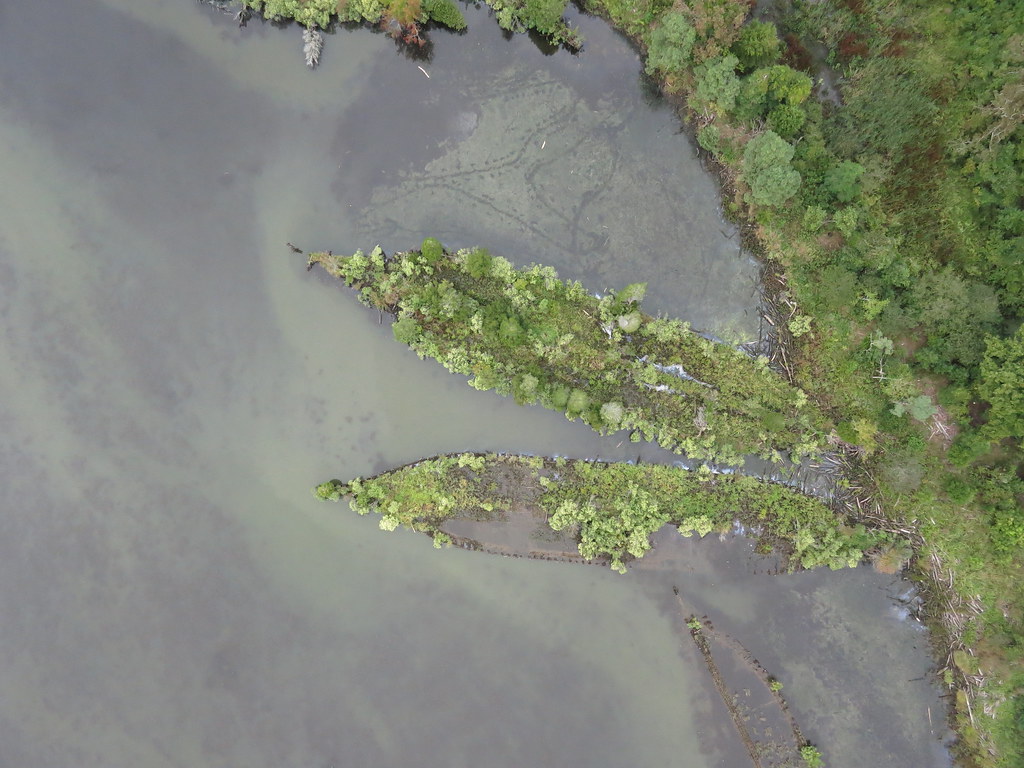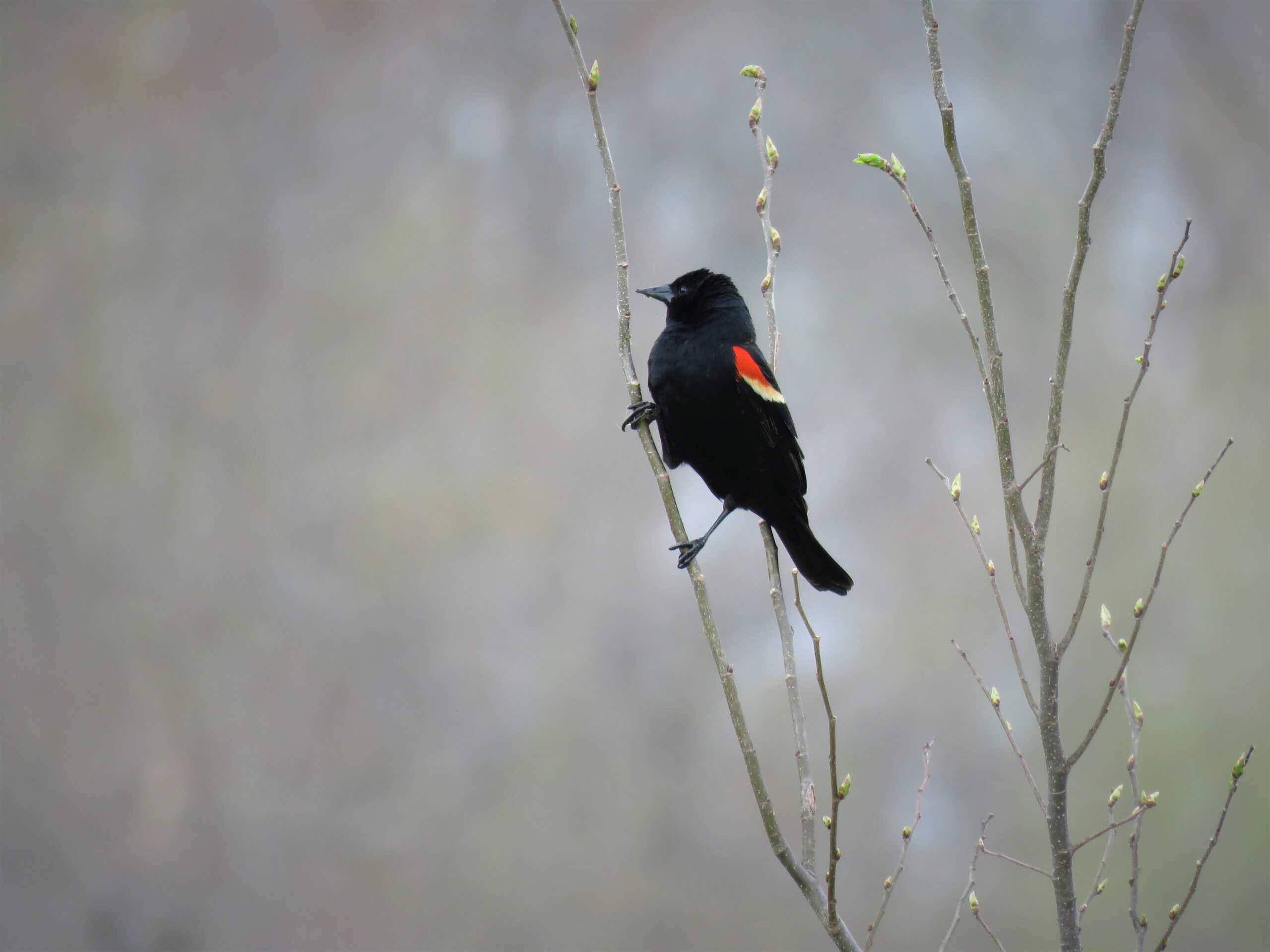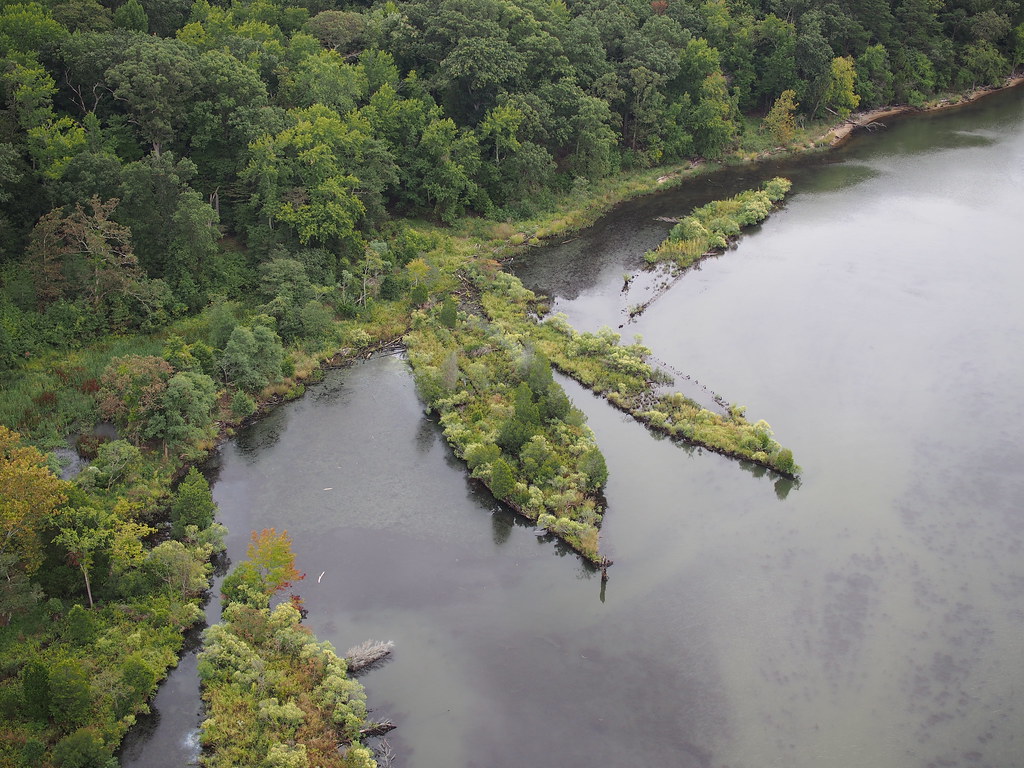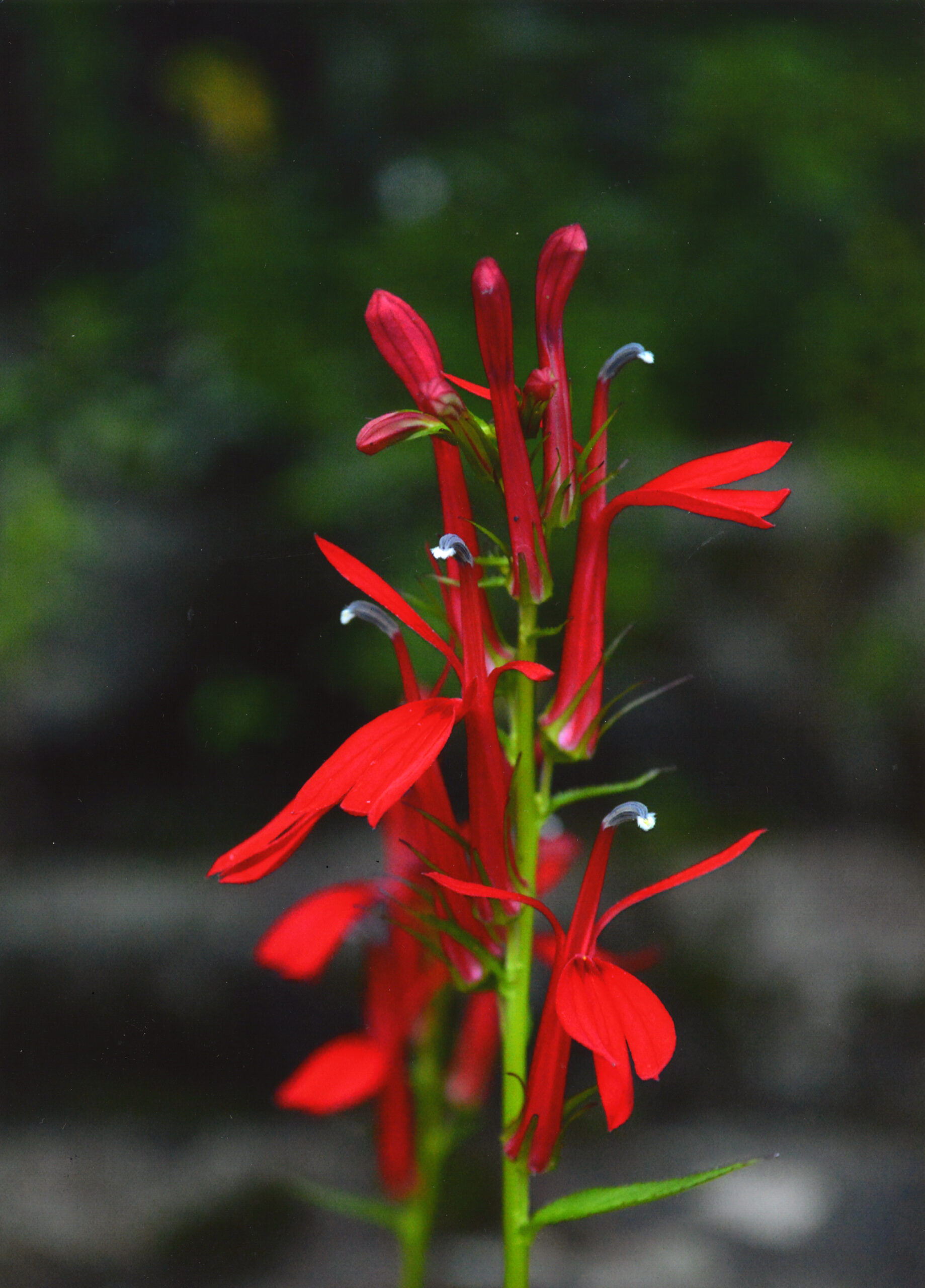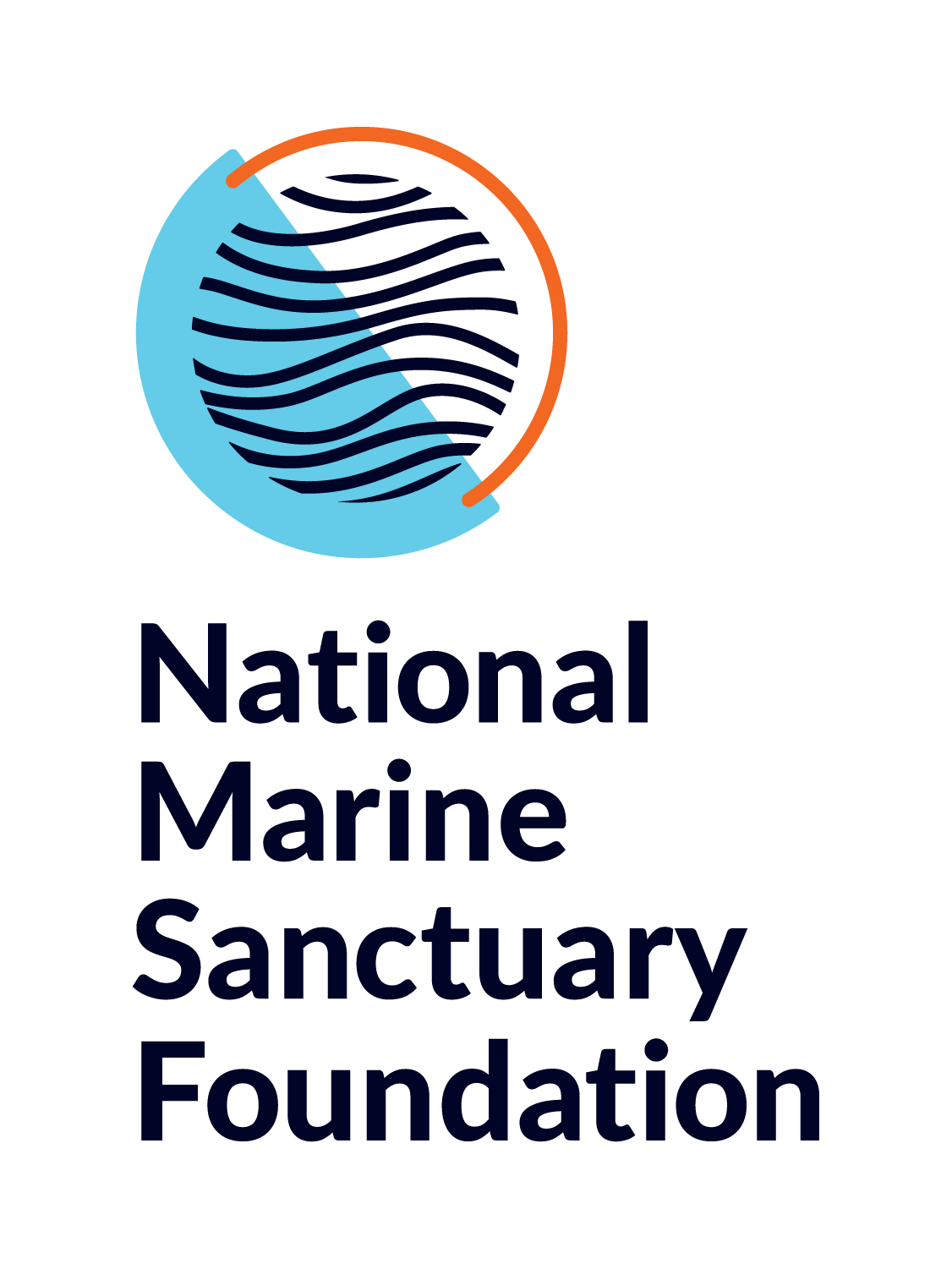These two unidentified ships are called “flowerpot” wrecks. They get their name from the plants growing inside the ships, much like how plants grow in a flowerpot. Rocks were put in their hulls to weigh them down and keep them from drifting. As time passed, sediment and seeds gathered inside, turning them into man-made islands. Today, they help to make the shores of Mallows Bay strong and stable. As land plants began to grow on these wrecks, the wetland area was extended along the shoreline. Soon marsh plants, such as marsh tickseed, cardinal flower, and interior sandbar willow, were documented on the site. This area is also important to wildlife that relies on these marsh plants for food, habitat, and breeding. Animals, such as red-winged blackbirds and zebra swallow-tail butterflies, are often seen in the area.
